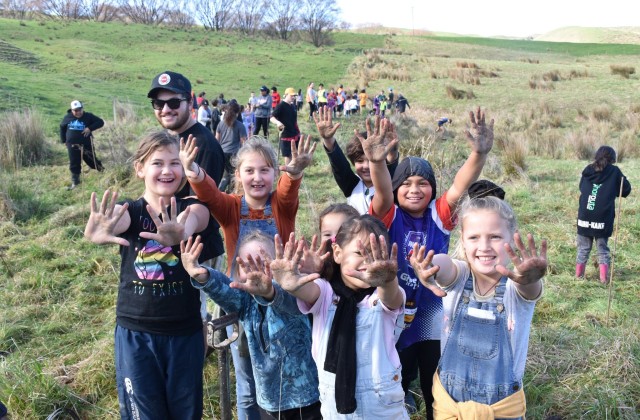Trees that Count partnership making it count
As the Tairāwhiti region as a whole prepares to experience more potential weather events into the future, the planting of native trees is part of a bigger picture to futureproof the land for future generations.
Underpinning all activities in and around te taiao (environment) is the Farms’ whakatauki “a healthy and thriving taiao is a healthy and thriving people.”
Managed by the Project Crimson Trust, formed 30 years ago to save the pōhutukawa from extinction, the Trees That Count programme is designed to help New Zealanders plant 200 million native trees over the next 10 years. To date, 32,353,528 trees have been planted and counting since 2016, with over 700,000 trees gifted or donated through the Trees That Count marketplace.
A typical full grown tree can absorb around 21 kilograms of carbon dioxide per year. Not only do trees absorb carbon dioxide as they grow, they also provide habitat, kai and shelter for a range of species, while reducing ambient temperatures and the rate of soil erosion.
Since 2019, Whāngārā Farms have been working with Trees that Count in the Whangara wetland planting project. Whāngārā Farms land includes approximately 4ha of wetland and terrestrial native planting. At least 1,000 trees have already been gifted and planted, with more planned. The climate impact of the planting of 1000 trees could help remove about 228 tonnes of CO2 over 50 years.
The planting and restoration project forms just one part of a larger Environmental Masterplan underway at the farm, which includes fencing of blocks as part of the Cyclone Gabrielle recovery, regenerative farming practices and widespread planting of native species to encourage biodiversity and stem erosion.
The project aims to restore te taiao back to a healthy state so that native flora and fauna can thrive. Whāngārā Farms are committed to increasing the participation of shareholders on their whenua through this project, and other initiatives such as using projects as an outdoor classroom for Whāngārā School and the surrounding communities.
In the future, Whāngārā Farms hopes to have far more access to the whenua for shareholders, whānau, hāpu and iwi to move towards creating an asset for the community. Whāngārā Farms’ wetlands are also regarded as some of the best in the region. Given how few wetlands are left in our area of Aotearoa, wetlands will be a key focus of regeneration – a feat for our local and coastal taiao.
Whāngārā Farms’ role as kaitiaki is to hold strong to the importance of our environmental wellbeing and centre our decision-making over our natural resources with our shareholders, whānau, hapu and iwi.
Photo credit: Trees that Count, 2019









